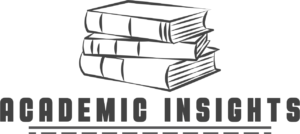In the world of software development, quality assurance plays a crucial role in ensuring that software applications meet the highest standards. Software testers are the unsung heroes who ensure that software products are free from bugs, function as intended, and provide a seamless user experience. While theoretical knowledge is essential, gaining hands-on experience is equally vital for becoming an effective software tester. In this blog, we’ll explore the steps you can take to build actual software tester experience and excel in this dynamic and rewarding field.
I. The Fundamentals of Software Testing
Before diving into practical experience, it’s essential to understand the fundamentals of software testing. This includes grasping the Software Development Life Cycle (SDLC) and the various types of software testing, such as manual testing, automated testing, functional testing, performance testing, security testing, and usability testing. Additionally, we’ll emphasize the importance of meticulous test documentation and effective bug reporting.
II. How to Start Building Your Software Tester Experience
A. Gaining Basic Software Knowledge
To become an accomplished software tester, you must first familiarize yourself with the foundational aspects of software. This includes learning various programming languages, understanding databases and SQL, and becoming well-versed in different operating systems and environments.
B. Exploring Testing Tools and Frameworks
In the modern testing landscape, a wide array of testing tools and frameworks are available to assist testers in their work. Understanding and becoming proficient in test management tools, automation testing tools, and bug tracking systems will significantly enhance your testing capabilities.
C. Joining Online Testing Communities and Forums
One of the most effective ways to gain practical knowledge is by engaging with fellow testers in online testing communities and forums. Active participation in discussions, solving real-world testing challenges, and learning from experienced testers will broaden your expertise and expose you to diverse testing scenarios.
III. Building Practical Experience through Personal Projects
A. Identifying Test Scenarios and Test Cases
Embark on personal software projects to gain hands-on experience. Begin by identifying test scenarios and test cases that will cover various functionalities and edge cases.
B. Test Planning and Execution
Practice test planning and execution to simulate real-world testing projects. Develop a systematic approach to design test plans, execute test cases, and record test results.
C. Test Automation Implementation
Automation has become an integral part of software testing. Learn to implement test automation using popular automation tools to increase efficiency and reduce manual effort.
D. Analyzing and Reporting Test Results
Interpret test results effectively and learn to create comprehensive test reports with clear, actionable insights for developers and stakeholders.
IV. Internships and Freelancing Opportunities
A. The Value of Internships for Aspiring Testers
Consider taking up internships with software companies or QA departments to gain industry experience and work alongside seasoned professionals.
B. Finding Freelance Testing Projects
Freelancing platforms offer opportunities to work on diverse testing projects, allowing you to gain exposure to different domains and technologies.
C. Making the Most of Internship and Freelancing Experiences
Make the most of your internship and freelancing experiences by actively seeking feedback, learning from experienced mentors, and showcasing your contributions.
V. Open Source Contributions for Testers
A. Introduction to Open Source Projects
Explore open-source software and understand how you can contribute as a tester.
B. Identifying Testing Opportunities in Open Source Software
Discover testing opportunities within open-source projects and start contributing to improve the software’s quality.
C. Contributing to Testing Efforts in Open Source Projects
Collaborate with developers and the open-source community to enhance testing efforts, gain recognition, and showcase your skills.
D. Collaborating with Developers and the Community
Learn to work harmoniously with developers and the open-source community, fostering a collaborative and productive environment.
VI. Networking and Professional Development
A. Attending Software Testing Conferences and Events
Participate in software testing conferences and events to learn from industry experts, stay updated on emerging trends, and expand your professional network.
B. Joining Testing Webinars and Workshops
Engage in testing webinars and workshops to access valuable insights, practical tips, and expert advice from testing professionals.
C. Building a Strong Online Presence
Establish an online presence by contributing to testing blogs, forums, and social media platforms. This will help you showcase your expertise and connect with like-minded individuals.
D. Creating a Testing Portfolio
Develop a comprehensive testing portfolio that highlights your projects, contributions, and achievements as a testament to your skills and experience.
VII. Advancing Your Career as a Software Tester
A. Seeking Full-Time Testing Positions
With your growing experience and expertise, begin applying for full-time software testing positions that align with your career goals.
B. Demonstrating Your Experience in Interviews
Ace the interview process by articulating your practical experiences, problem-solving abilities, and your passion for ensuring software quality.
C. Continuous Learning and Skill Improvement
Software testing is an ever-evolving field, so commit to continuous learning, staying updated on testing methodologies, tools, and industry trends.
VIII. Common Challenges and How to Overcome Them
A. Lack of Professional Experience
Address the challenge of limited professional experience by leveraging personal projects, internships, and freelance opportunities to demonstrate your skills.
B. Dealing with Complex Testing Scenarios
Tackle complex testing scenarios by breaking them down into manageable components and collaborating with fellow testers and developers.
C. Balancing Manual and Automated Testing Efforts
Learn to strike a balance between manual and automated testing approaches based on project requirements and priorities.
IX. Takeaway
In conclusion, building actual software tester experience requires dedication, continuous learning, and practical application of testing principles. By following the steps outlined in this comprehensive guide, you’ll be well on your way to becoming a skilled and sought-after software tester. Embrace challenges, seek opportunities for growth, and contribute to the software testing community to solidify your position as a proficient software tester. Remember, experience is the key to unlocking your potential in this exciting field of quality assurance.



